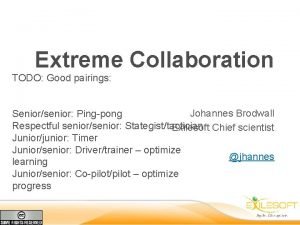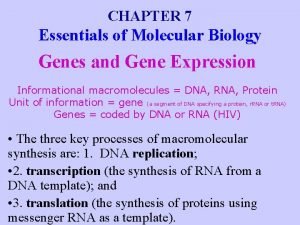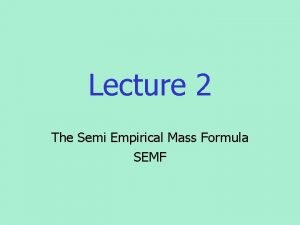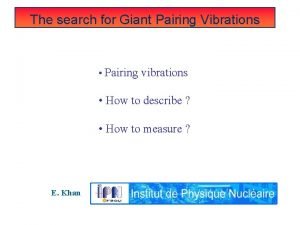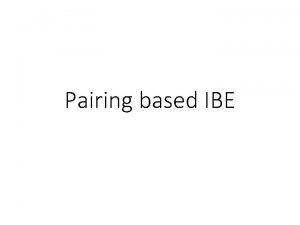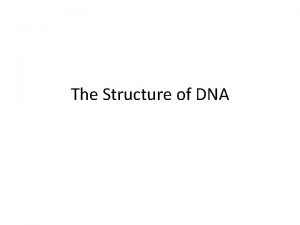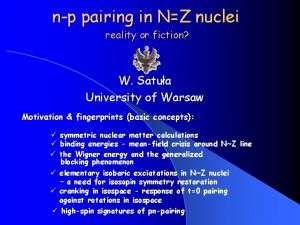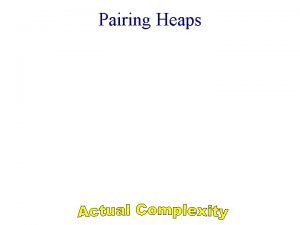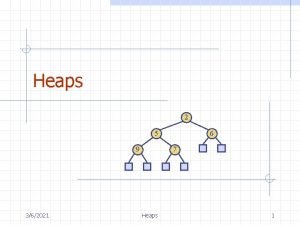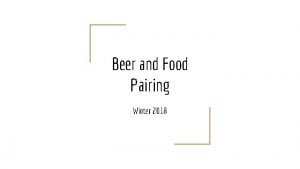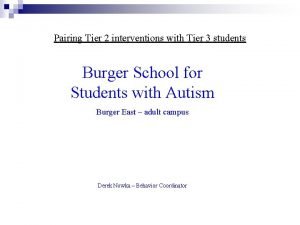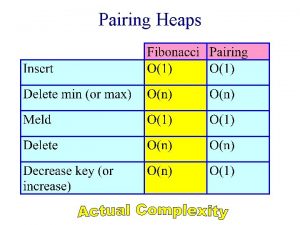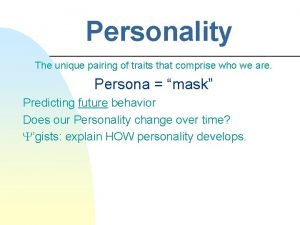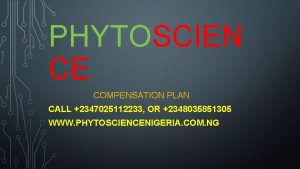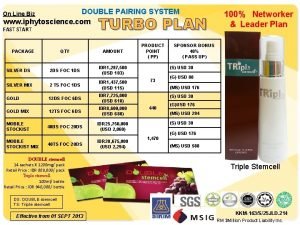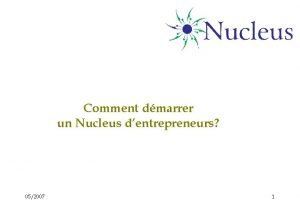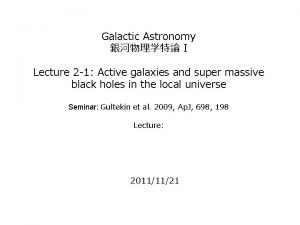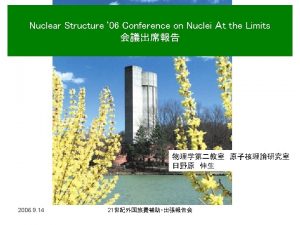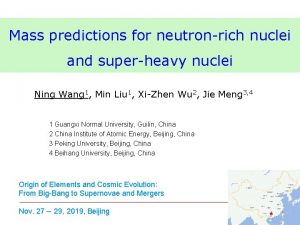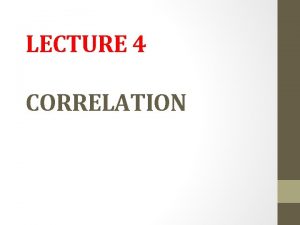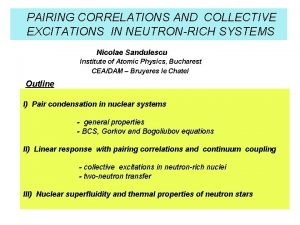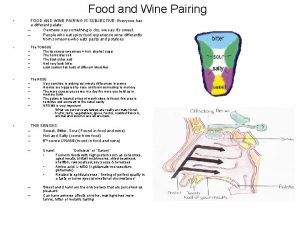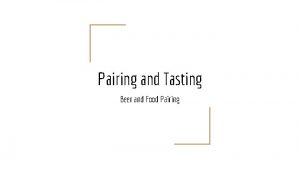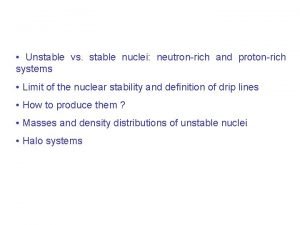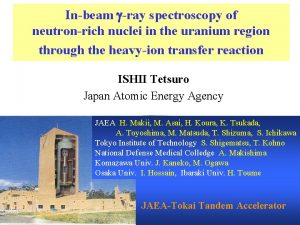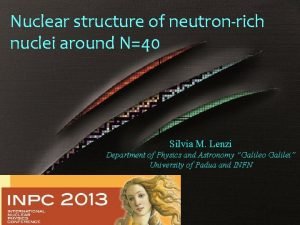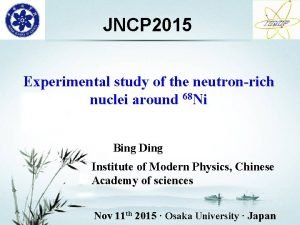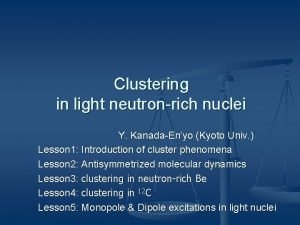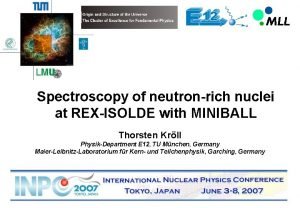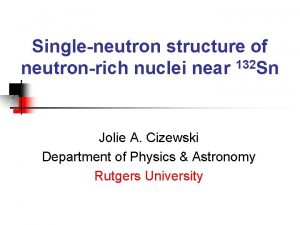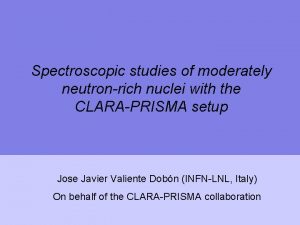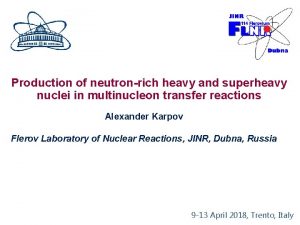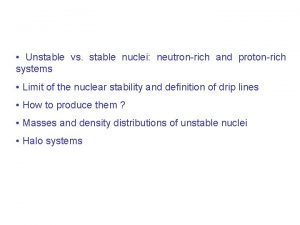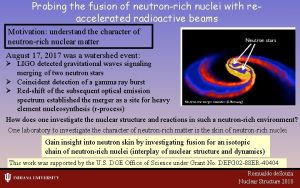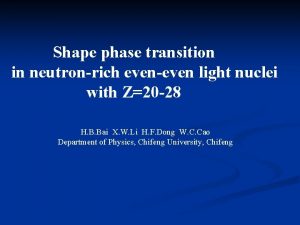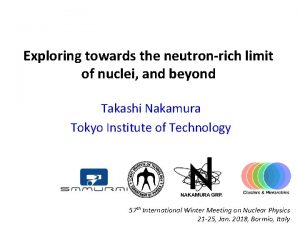Pairing Correlation in neutronrich nuclei 11 Li 1


























- Slides: 26

Pairing Correlation in neutron-rich nuclei 11 Li 1. 2. 3. 4. 5. 6. 7. K. Hagino (Tohoku University) H. Sagawa (University of Aizu) Motivation: BCS-BEC crossover Three-body model with density-dependent delta interaction Ground state properties of 11 Li and 6 He Relation to BCS-BEC crossover Di-neutron correlation in 8 He and in heavier nuclei Parametrization of density-dependent pairing interaction Summary

Introduction: BCS-BEC crossover Cooper pair wave function: crossover BEC (strong coupling) BCS (weak coupling) Correlation in r space (small coherence length) Correlation in p space (large coherence length) x x

Spatial structure of neutron Cooper pair in infinite matter BCS Crossover region Implication to finite nuclei? Relation to di-neutron correlation? M. Matsuo, PRC 73(’ 06)044309

Three-body model with density-dependent delta force 11 Li, 6 He r 1 core r 2 n VWS Density-dependent delta-force VWS n Diagonalization: G. F. Bertsch and H. Esbensen, Ann. of Phys. 209(’ 91)327 H. Esbensen, G. F. Bertsch, K. Hencken, Phys. Rev. C 56(’ 99)3054

Density-dependent delta interaction H. Esbensen, G. F. Bertsch, K. Hencken, Phys. Rev. C 56(’ 99)3054 ØTwo neutron system in the vacuum: ØTwo neutron system in the medium: : adjust so that S 2 n can be reproduced

Two-particle wave functions (J=0 pairs) Hamiltonian diagonalization Continuum: box discretization l. Energy cut-off: l

Two-particle density for the ground state 11 Li 6 He r q 12 K. H. and H. Sagawa, PRC 72(’ 05)044321 r strong di-neutron correlation

Geometry of Borromean nuclei “experimental” mean opening angle (note) forbidden transition H. Esbensen, K. H. , P. Mueller, and H. Sagawa, PRC 76(’ 07)924302

Dipole excitations Response to the dipole field: Smearing: K. H. and H. Sagawa, PRC 76(’ 07)047302

Dipole excitations K. H. and H. Sagawa, PRC 76(’ 07)047302

Geometry of Borromean nuclei “experimental” mean opening angle (note) forbidden transition H. Esbensen, K. H. , P. Mueller, and H. Sagawa, PRC 76(’ 07)924302 or also from HBT-type 2 n correlation study

Geometry of Borromean nuclei 11 Li “experimental” mean opening angle 6 He B(E 1) matter radius or HBT (11 Li) (6 He) K. H. and H. Sagawa, PRC 76(’ 07)047302

Relation to BCS-BEC crossover 11 Li probing the behaviour of 2 n-wf at several densities

K. H. , H. Sagawa, J. Carbonell, and P. Schuck, PRL 99(’ 07)022506

11 Li good correspondence K. H. , H. Sagawa, J. Carbonell, and P. Schuck, PRL 99(’ 07)022506. Nulcear Matter Calc. M. Matsuo, PRC 73(’ 06)044309

2 -neutron rms distance Matter Calc. M. Matsuo, PRC 73(’ 06)044309 cf. Free n-n system virtual state around zero energy < r > ~ 12 fm (Nijmegen potential) 11 Li

Di-neutron correlation in 8 He a + 4 n model Vna: Woods-Saxon vnn: density-dependent contact force Hartree-Fock-Bogoliubov (HFB) + PNP (VBP) two-body correlation density 4 particle density (dineutron-dineutron configuration)

Di-neutron correlation in 8 He two-body correlation density r q 12 4 particle density (dineutron-dineutron configuration) r r q 12 r K. H. and N. Takahashi, in preparation

Surface di-neutron condensation? canonical basis representation 8 He (core + 4 n) (wf for condensation) 84 Ni (WS-HFB) (contribution from v 2 < 0. 9)

Density-dependent pairing interaction? “standard” parametrization: : volume pairing fm-3 : surface pairing fm-3 : mix pairing another parametrization? I=(N-Z)/(N+Z) J. Margueron, H. Sagawa, and K. H. , ar. Xiv: 0710. 4241

Ec=40 Me. V bare screened hs 0. 664 1. 80 as 0. 522 0. 27 hn 1. 01 1. 61 an 0. 525 0. 122 J. Margueron, H. Sagawa, and K. H. , ar. Xiv: 0710. 4241

isotope dependence of pairing properties in finite nuclei (HFB calculation)? J. Margueron, H. Sagawa, and K. H. , ar. Xiv: 0710. 4241

Summary ØApplication of three-body model to Borromean nuclei 11 Li ØDi-neutron wave function for each R l Close correspondence to the matter calculations l BCS/BEC crossover phenomenon l Concentration of a Cooper pair on the nuclear surface very different from the conventional view of pairing l Also in other superfulid nuclei (universality) 6 He, 16 C, 24 O cf. see also N. Pillet et al. , PRC 76(’ 07)024310

Gogny HFB calculations N. Pillet, N. Sandulescu, and P. Schuck, PRC 76(’ 07)024310

charge radius 11 Li 1. 175(124) fm 2 (exp) 0. 789 fm 2 (3 body model) 6 He 2. 054(14) fm 2 (exp) 2. 036 fm 2 (3 body model) H. Esbensen, K. H. , P. Mueller, and H. Sagawa, PRC 76(’ 07)924302

for 84 Ni q (deg) r (fm) contribution from the “core” (v 2 > 0. 9) contribution from the valence (v 2 < 0. 9)
 Positive correlation versus negative correlation
Positive correlation versus negative correlation Positive and negative correlation
Positive and negative correlation Beer and food pairing history
Beer and food pairing history Pairing
Pairing Codon anticodon pairing
Codon anticodon pairing Semi empirical mass formula notes
Semi empirical mass formula notes Pairing
Pairing Pairing based cryptography
Pairing based cryptography Chargaff rule definition
Chargaff rule definition Plb fit pairing
Plb fit pairing Bioflix activity dna replication dna replication diagram
Bioflix activity dna replication dna replication diagram Examples of pairing tools
Examples of pairing tools Pasta sauce pairing
Pasta sauce pairing Pairing heap
Pairing heap Pairing heap visualization
Pairing heap visualization Beer and food pairing history
Beer and food pairing history Which pairing of sacred text and religion is correct
Which pairing of sacred text and religion is correct Pairing heap visualization
Pairing heap visualization Pairing
Pairing Pairing heap
Pairing heap Unique pairing personality
Unique pairing personality Doppelbock food pairing
Doppelbock food pairing Pairing
Pairing Double pairing
Double pairing Comment démarrer un nuclei
Comment démarrer un nuclei Active galactic nuclei
Active galactic nuclei Diencephalon
Diencephalon



